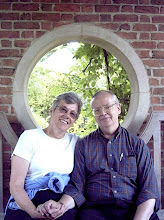“Shapeless thoughts from Swedenborg”
Stephen’s soul has been briefly awakened, and he catches a fleeting glimpse of his higher calling. But such transcendent experiences, like manna in the wilderness, seem to evaporate like the morning dew, drifting out of immediate consciousness into some quiet chamber of the soul. Stephen sinks back into lower realms of consciousness: the realm of the intellect, of reason and rationality.
And so we see Stephen a few years later, as a university student trying to figure out the scholastic systems of the great philosophers. His mind is totally occupied with metaphysical questions. He has become an academician — hardly the young artist whose soul had cried out with simplicity and purest passion, “Heavenly God!”
Nevertheless, there is still something in his soul deeper than reason, larger than life, something that yearns to be satisfied and cries out to him, something leading him onward. Stephen stops to watch birds overhead.
“What birds were they? . . . He watched their flight; bird after bird . . . he listened to their cries. . . . The inhuman clamor soothed his ears. . . . Why was he gazing upwards from the steps of the porch, hearing their shrill twofold cry, watching their flight? For an augury of good or evil? A phrase of Cornelius Agrippa flew through his mind and then there flew hither and thither shapeless thoughts from Swedenborg on the correspondence of birds to things of the intellect and of how the creatures of the air have their knowledge and know their times and seasons because they, unlike man, are in the order of life and have not perverted that order by reason.”(James Joyce, A Portrait of the Artist as a Young Man, pp. 224-225, passim.)
To Swedenborg, the movement and beauty of birds represents human intellect as it seeks to be led and taught by the Divine.
— Ray Silverman, “Welcome, O Life!”, in Chrysalis, Volume VIII, Issue 2, “Work,” Summer 1993.
I know that Ghostface, Dirty, and GZA all understood the deeper implication these movies had for our lives, and I know everyone in the Clan does now. From Thirty-sixth Chamber you get discipline and struggle. From Shaolin and Wu-Tang you get the warrior technique — plus the idea bad guys are sometimes the illest. Then, from Eight-Diagram Pole Fighter, you get the brotherhood, the soul. You get the idea that, This guy right here? He’s stronger than me. Maybe he can take it a little further than I can. Let me throw my power behind him so we all rise up.
In a way, the group we’d end up forming had to be called the Wu-Tang Clan. The name says that we’re Wu-Tang warriors, we’re from Shaolin, and we’re a Clan, which means family. That last part’s just as crucial because it’s about a connection to something bigger than yourself, which is where the greatest strength always comes from.
That last bit of wisdom started to take hold of me later, when I began studying with Sifu Yan Ming, a thirty-fourth generation Shaolin monk who defected from China in ’92 and came to open a Shaolin temple in New York. He was the abbot of his school, I was the abbot of mine — he felt like a peer. But I also wanted to learn from him. “Sifu” can translate as “master,” and that’s a tough word in the black community, but I realized that sometimes you have to submit to someone to learn. So I did.
With Sifu I learned many Shaolin techniques, but my favorite is probably the Five Elements, maybe because I saw The Five Deadly Venoms at a young age. This technique breaks nature down into five basic forces: earth, water, metal, wood, and fire — which are also represented by the kung-fu styles snake, crane, dragon, leopard, and tiger. Most martial arts teach you to be fluid as water, but earth absorbs water — so you counter water techniques with earth techniques, which absorb blows. Then if someone comes at you with earth techniques, you counter with wood styles, which drive forward. Then you counter wood with metal styles, which chop like an axe, and metal with fire styles, which are more explosive, and finally, you fight fire with water.
These principles are both external and internal. Internally, it applies to your five major organs. Earth is the spleen, metal is the lungs, water is the kidneys, wood is the liver, fire is the heart.
— The RZA, The Tao of Wu, pp. 58-59.

No comments:
Post a Comment